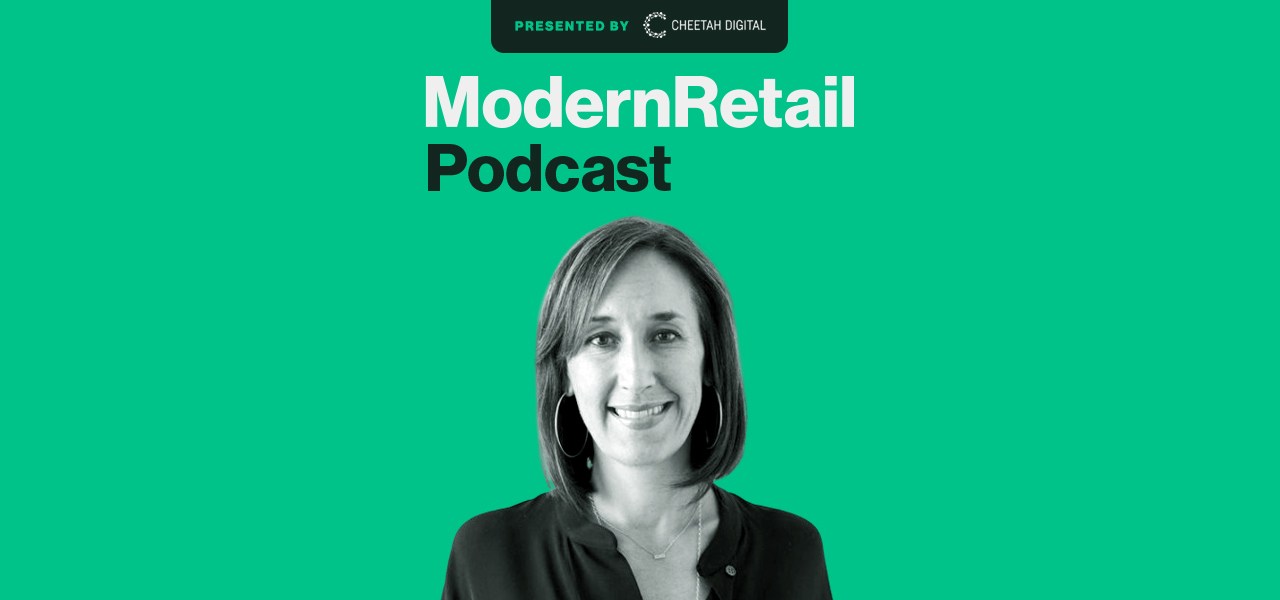‘A slightly different voice’: Casper’s Emilie Arel on how its branding and product line has evolved

Subscribe: Apple Podcasts | Stitcher | Google Play | Spotify | RSS
Emilie Arel joined mattress brand Casper for a personal reason. “I have two little kids — they both slept on a Casper before I worked at Casper,” she said. “The way I realized how great a Casper was, I would fall asleep on their bed every night.”
Arel joined Casper in late 2019 as its president and chief commercial officer. She oversees all the disparate and growing parts of Casper’s retail business. Arel spoke on the Modern Retail Podcast about what she’s focused on during her tenure, as well as how the pandemic threw everything into disarray. “I don’t think we recognized how much people would invest in their home so quickly,” she said. “We had no clue we’d still be sitting in our houses almost a year from then that was not on the horizon.”
Her first mandate as CCO was to tie all the business threads together. Casper has over 60 stores around the United States and is sold at retailers including Target, Nordstrom and Raymour and Flanigan. Wholesale specifically has been a real emphasis for Arel. True, Casper began as an online brand, but it needed the help of national chains to really grow.
“The majority of beds in the United States are still bought in a location somewhere you can lay down in the bed,” she said. So Arel has spent the last year thinking about which retail partners would be best for Casper. One of the most important aspects of the wholesale retail experience, she said, is making sure every sales associate is armed with the proper training — “so that they understand our product, and they understand our focus on sleep.”
But Casper’s real focus right now is making a name for itself beyond just mattresses. The brand has launched a bunch of new sleep-associated products, including blankets and pillows. And Arel said Casper is seeing huge growth from these ancillary products.
The intent now, she said, is to continue to launch new sleep products, while making more people — not just hip millennials — aware of the brand. “Soon we’ll be talking to consumers in a different way, with a slightly different voice,” she said.
Here are a few highlights from the conversation, which have been lightly edited for clarity.
Focusing on omnichannel
“[When] I came into the business, we had stores — we have a wholesale business, retail partnerships. And then we have our e-comm business. They were like a lot of early stage companies with different channels. They were being run pretty separately. So my first thing I really wanted to do with the team was really think about how do we run an omnichannel business — and I know that word is overused. When I say it, I really mean for the customer. How do we make sure this feels like one store? Because what you don’t want is a customer walking into the store and showing their phone to the store associate and saying, ‘well, but it’s a different promo here.'”
Recalibrating the org chart
“[At] a company like Casper that had such fast growth early on, you have a lot of people doing a lot of different jobs. I have someone on my team now who’s been at the company four and a half years, who’s done like six different jobs since he’s been there. What I really came in to do was to say, how do we create experts at each of these teams: a retail team, an e-comm team and a retail partnership team. They’re really experts in their field, but can also work across [departments] — I’m sort of the tiebreaker at meetings… And at the center of every conversation is the customer: What is best for the customer? And how does the customer want to shop? This is something I see in the retail industry that holds us back as an industry all the time: We let our org charts get in the way of doing the right thing for the customer.”
Branding shifts on the horizon
“Casper really led on making subway advertising the thing that all DTC companies do. And so many marketing tactics — we had nap mobiles that traveled across the country, and went to Coachella and did all these cool things. For the past six, nine months, we’ve been really working on an immersive new brand strategy to think about what is the next phase of Casper. What is the next phase as we really talk to not only young millennials — 29 year olds who live in apartments — but families — who live in the suburbs and have three or four bedrooms and have a couple of kids. How did they want to be reached? How do we speak to them? And so we’re really excited that soon we’ll be talking to consumers in a slightly different way, with a slightly different voice.”

